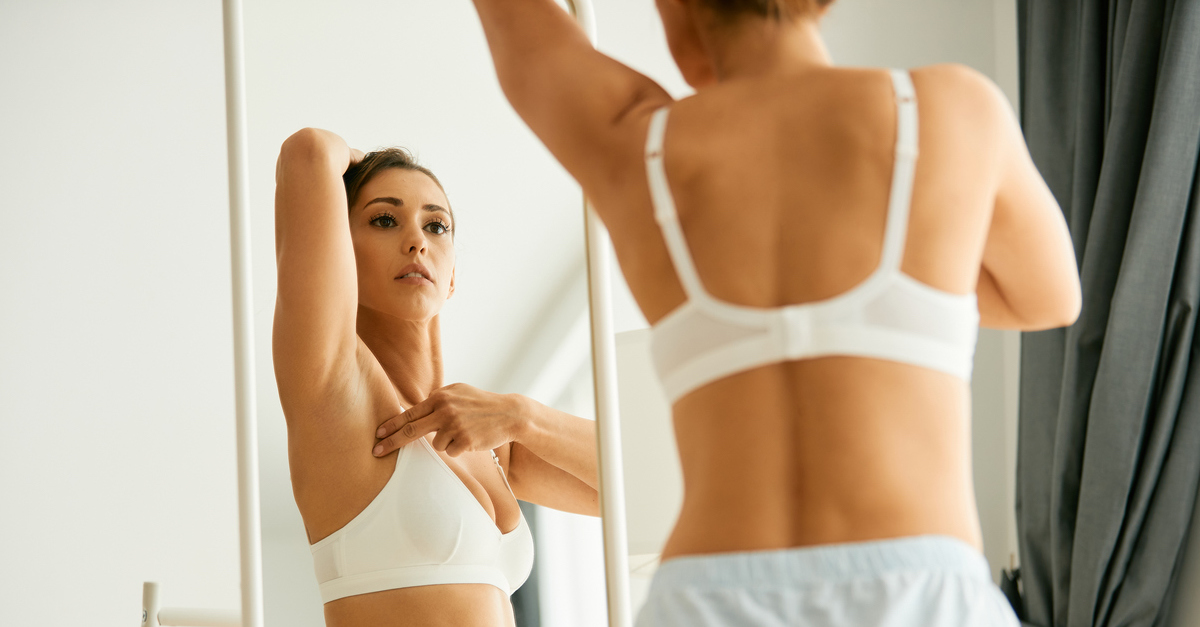While mammography is the best method for detecting breast cancer at its most treatable stage, 57% of breast cancer survivors identified something unusual before a mammogram was even conducted. This means that self-examinations can play a crucial role in breast cancer detection and treatment.
As Heidi Trott, a nurse practitioner and three-time breast cancer survivor told Hutch News Stories, “If you get a sense of what your breast tissue feels like, of the lumps and bumps that wax and wane, then you’ll know what’s normal for you. And you’re more likely to pick up something that feels different.”
If it’s been a while since your last self-exam, or you’re new to the practice, in honor of Breast Cancer Awareness Month, we’ve assembled some advice.
How to Conduct a Self-Exam
Starting at the age of 20, adult women are advised to conduct a self-examination regularly. Here are a few things to look for during the three types of evaluations:
- Dimpling
- Bulging of the skin
- Puckering
- Inverted nipples
- Redness, soreness, swelling, or a rash
- Asymmetrical ridges
In The Shower
It is often easier to conduct a self-exam when your skin is wet so that your fingers can move around more easily. With the pads of your three middle fingers, slowly and gently (but firmly) press the skin of your breasts in small, circular motions. Start at the center of each nipple and move to the outside edge, all the way to your armpit. Notice if there are any knots or lumps.
In Front of the Mirror
Self-examining in front of the mirror can help you see both breasts in their entirety. With your shoulders back and back straight, look at your breasts without touching them. Lift your arms above your head to see if there are any differences in size, or if there is dimpling in the skin. Take note of your nipple alignment, color, and any irregularities in their areolae or tips.
Lying Down
While laying down, your breast tissue will spread out evenly over the chest wall. This will make it easier to notice abnormalities that may not have been detected previously. Using the same motions as you did in the shower, inspect your breasts and armpits by pressing down gently, then firmly, in a circular motion.
Warning Signs
Minute changes to your breasts can ebb and flow around your menstrual cycle, which may cause unnecessary anxiety and doctors appointments. Kimberly Hoskins, an advanced practice nurse told Michigan Health that some women may have unnecessary biopsies just because they feel something is off.
Keep in mind these warning signs that may truly need to be checked by your doctor:
- Thickening or prominent tissue in comparison to the surrounding tissue
- A hard lump near or around your armpit
- Bulges or ridges on the skin of your breast
- Pain and/or swelling
- Bloody nipple discharge
There are several other symptoms that regular self-exams and body awareness can help you detect. The more familiar you are with your breasts, the more these abnormalities will stand out. Hoskins re-emphasized this importance, stating, “A significant number of breast cancers are still found based on something a woman saw or felt. We advise women to get to know their breasts so that they can recognize any changes that need to be checked by a provider.”
If you are in need of quality screening after conducting a self-exam or consultation with your doctor, Heartland Imaging is dedicated to providing effective outpatient imaging services, including mammography. Visit our website to learn more or call us at (502) 429-6500 to make an appointment with one of our specialists.

